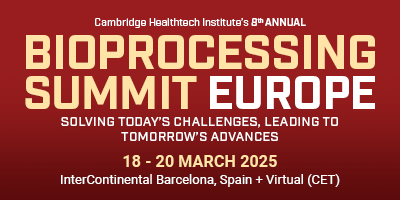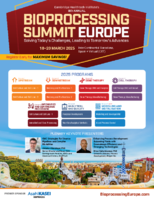Cambridge Healthtech Instituteの第8回年次
Advances in Recovery and Purification - Part 2
回収・精製の進歩 - パート2
Novel Modalities and Digitalization
新規モダリティとデジタル化
2025年3月19日 - 20日 CET(中央ヨーロッパ標準時)
3月19日(水)
10:30Registration Open
PLENARY KEYNOTE: ADAPTING TO GLOBAL DEMANDS AND EVOLVING PIPELINES
プレナリー基調講演:世界的な需要への適応と進化するパイプライン
CMC Strategies for Diverse Pipelines and Complex Modalities
 Christian Hunzinger, PhD, Senior Director and Head, CMC Development Proteins, ADCs and Chemical Entities, BioNTech
Christian Hunzinger, PhD, Senior Director and Head, CMC Development Proteins, ADCs and Chemical Entities, BioNTech
Biopharmaceutical treatment paradigms are shifting from monotherapy towards multi-target approaches with complex multimodal entities. This complexity also translates into increasingly complex CMC development and manufacturing strategies. The talk will provide a general overview on recent developments, challenges, and opportunities, along with examples from various stages of the CMC development lifecycle.
Enhancing Process Development: Balancing Yields with Downstream Efficiency and Emerging Technologies
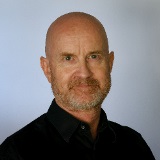 Oliver Kaltenbrunner, PhD, Scientific Director, Process Development, Amgen Inc.
Oliver Kaltenbrunner, PhD, Scientific Director, Process Development, Amgen Inc.
Explore the evolving landscape of process development, emphasising the critical balance between maximising yields and optimising downstream processing. This presentation will delve into the impact of upstream processes on primary recovery, integrating cutting-edge technologies like Process Analytical Technology (PAT), advanced modelling, and artificial intelligence. Supported by real-world examples, we'll examine how these innovations are reshaping process efficiency and performance in the industry.
12:20Session Break
12:30Sponsored Presentation (Opportunity Available)
13:00Networking Lunch in the Exhibit Hall with Poster Viewing

DIGITALISATION AND PROCESS CONTROL
デジタル化とプロセス制御
Host Cell Proteins Profiling and Characterisation for Model-Based DSP Design
 Marcel Ottens, PhD, Professor, Biotechnology, Delft University of Technology
Marcel Ottens, PhD, Professor, Biotechnology, Delft University of Technology
This presentation explores the integration of host cell proteins (HCP) profiling into model-based downstream process (DSP) design. By examining the characterisation techniques and quantification of HCPs, we demonstrate how these data inform the optimisation of purification strategies, enhancing product purity and process efficiency. Case studies illustrate the impact of advanced HCP analytics on biopharmaceutical production, emphasising practical applications and theoretical implications for DSP workflows.
Digitalisation Strategies to Enhance Efficiency and Product Quality
 Oliver Hesse, Lead, CMC Digital Transformation and Data Science
Oliver Hesse, Lead, CMC Digital Transformation and Data Science
This presentation will highlight our manufacturing platform strategy for cell therapies-emphasising data science, modelling, and PAT-to enhance manufacturing efficiency and product quality. By integrating automation and machine learning, we want to accelerate the development of robust processes. Join us in exploring how smart manufacturing practices can redefine the future of cell therapy production.
Pharmaceutical Freeze-Drying: Applications for Multi-PAT Sensors
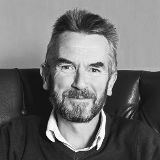 Geoff Smith, PhD, Professor, Pharmaceutical Process Analytical Technology, De Montfort University
Geoff Smith, PhD, Professor, Pharmaceutical Process Analytical Technology, De Montfort University
A novel program of work (Digital_Lyo) will be presented that is being undertaken by a consortium or academic, industrial, and regulatory authority partners, including AstraZeneca, Siemens, the Medicines and Healthcare Regulatory Agency (UK), and smaller industrial enterprises with specialist capability in sensor development. The talk will present highlights of the Digital_Lyo programme, including the applications for a novel process analytical technology called through-vial impedance spectroscopy (TVIS).
 From Industry Needs to PAT Solutions - Pioneering Conductivity in Downstream Applications
From Industry Needs to PAT Solutions - Pioneering Conductivity in Downstream Applications
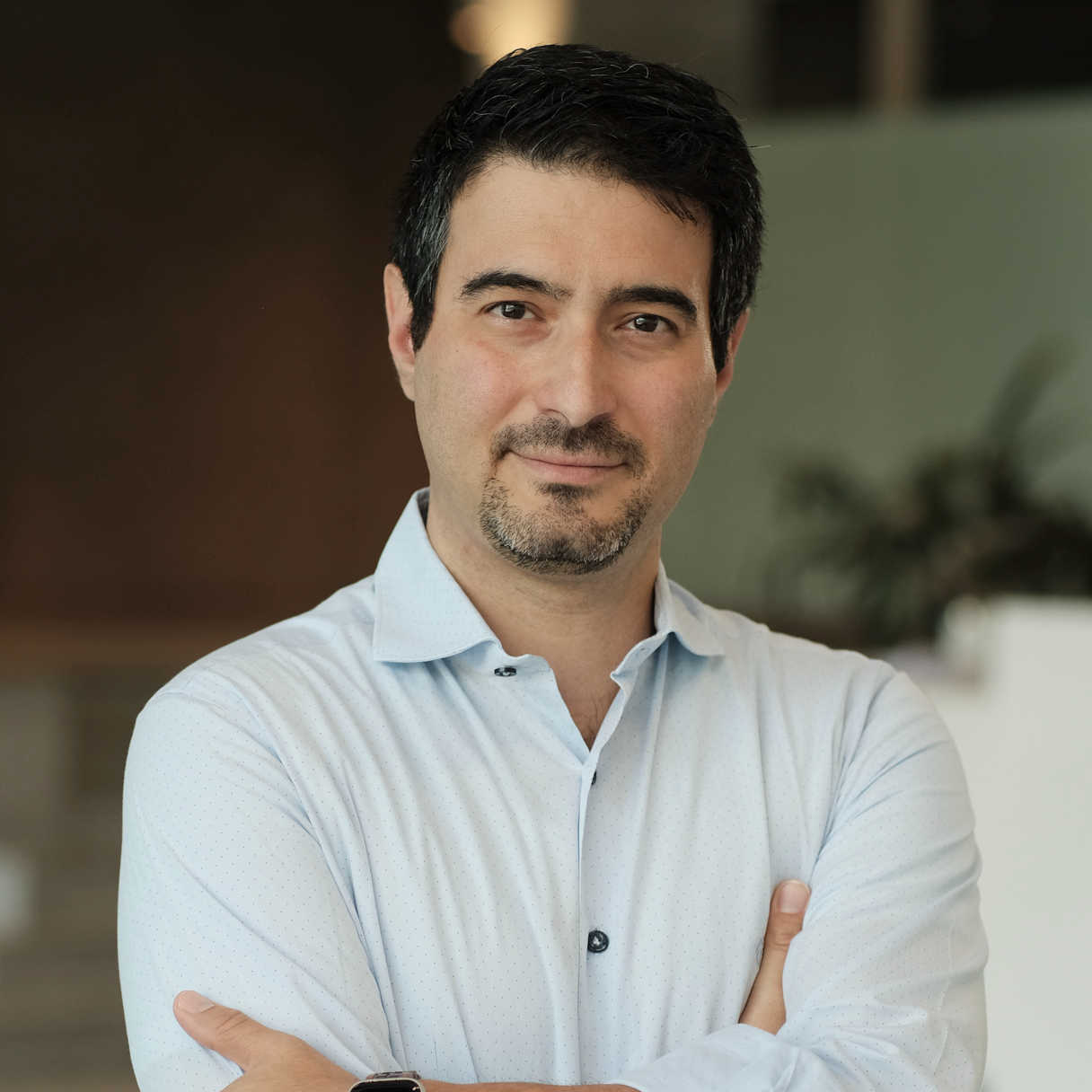 Giovanni Campolongo, Senior Market Segment Manager, Biopharma, Hamilton Bonaduz AG
Giovanni Campolongo, Senior Market Segment Manager, Biopharma, Hamilton Bonaduz AG
Conductivity accuracy and response time are critical in chromatography, where even minor deviations can result in significant product losses-estimated at up to $24,000 per minute. To help the biopharma industry prevent this, Hamilton developed its latest PAT solution: the Flow Cell COND 4UPtF. It delivers high accuracy (±3%) with the fastest response time on the market (T90 < 22s), preventing costly purification delays. Powered by Arc Intelligent Technology, this innovation: • reduces inaccuracy risks while ensuring streamlined compliance, • saves footprint space, and • enhances purification efficiency, saving up to $62,000 per purification cycle while cutting ownership costs by 65%.
16:05Sponsored Presentation (Opportunity Available)
16:20Refreshment Break in the Exhibit Hall with Poster Viewing

DIGITAL TWINS AND PROCESS MODELLING
デジタルツインとプロセスモデリング
Automated Generation of Digital Twins and Their Use in Real-Time Monitoring of Process Chromatography
 Daniel Espinoza, PhD, Advanced Process Engineering, Lund University
Daniel Espinoza, PhD, Advanced Process Engineering, Lund University
For biomanufacturing to reach the standards of Industry 4.0, digital twins are crucial. To accelerate digitalisation efforts in downstream processing, we have developed a framework for automatic generation of mechanistic chromatography models. These models are then used to create a digital shadow of the process by means of Kalman filtering. The result gives improved monitoring of the chromatographic elution, combining both real-time data and mechanistic modelling.
Monitoring Protein Aggregation in Downstream Processing Using Automated Raman Spectroscopy
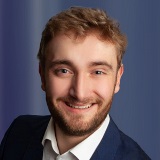 Jakob Heyer-Mueller, PhD Student, Institute of Engineering in Life Sciences, KIT
Jakob Heyer-Mueller, PhD Student, Institute of Engineering in Life Sciences, KIT
The presented case study investigates the application of automated Raman spectroscopy as an in-line tool for the monitoring of protein aggregation during downstream processing. Spectral effects associated with multiple aggregation phenomena were analysed to provide insights into structural changes of different proteins. Leveraging this knowledge, the potential of Raman spectroscopy for real-time monitoring of critical quality attributes in chromatographic processes was demonstrated.
Improving the Sustainability of Biopharmaceutical Downstream Processing through Buffer Recycling
 Madelène Isaksson, Doctoral Student, Department of Process and Life Science Engineering, Lund University
Madelène Isaksson, Doctoral Student, Department of Process and Life Science Engineering, Lund University
The production of biopharmaceuticals is both chemical- and water-intensive. The downstream process, which typically involves multiple chromatography steps, requires large volumes of buffers. With the global commitment to sustainable development goals and the anticipated growth of the biopharmaceutical market, buffer consumption is expected to become increasingly problematic. To mitigate this issue, we propose introducing buffer recycling in chromatography to reduce the consumption of water and chemicals.
INTERACTIVE BREAKOUT DISCUSSIONS
インタラクティブブレイクアウトディスカッション
Interactive Breakout Discussions are informal, moderated discussions, allowing participants to exchange ideas and experiences and develop future collaborations around a focused topic. Each discussion will be led by a facilitator who keeps the discussion on track and the group engaged. To get the most out of this format, please come prepared to share examples from your work, be a part of a collective, problem-solving session, and participate in active idea sharing. Please visit the Interactive Breakout Discussions page on the conference website for a complete listing of topics and descriptions.
Virus Clearance Strategies in Bioprocessing
Alois Jungbauer, PhD, Professor & Head, Biotechnology, Institute of Bioprocess Science and Engineering, BOKU University
- ICH Q5 A (R1) Revision: Viral safety Evaluation of Biotechnology
- Products Derived from Cell Lines of Human or Animal Origin Expectations
- What has changed and the Impact on bioprocessing
- Viral clearance strategies in continuous processing
- Virus removal
Optimizing Partnerships: Strategies for Effective CMO/CDMO Management in Bioprocessing
Tarik Senussi, PhD, Head of Technology Transfer, New Technologies, Recordati
- Defining Success Metrics: Key performance indicators for evaluating CMO/CDMO partnerships in bioprocessing projects
- Communication Strategies: Ensuring alignment through clear communication, project updates, and expectations management
- Risk Mitigation: Identifying and addressing common challenges such as quality assurance, timelines, and regulatory compliance
- Scaling and Innovation: Leveraging CMO/CDMO expertise to navigate scale-up/down challenges and integrate emerging technologies
18:30Close of Day
3月20日(木)
08:00Registration and Morning Coffee
DOWNSTREAM PROCESSING FOR COMPLEX THERAPIES AND FEEDSTOCKS
複合的な治療や原料向けダウンストリームプロセシング
Purification of Recombinant Proteins from Complex Feedstocks
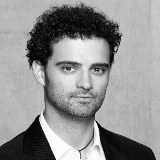 Johannes Felix Buyel, PhD, Head, Institute for Biochemical Engineering, University of Natural Resources and Life Sciences (BOKU)
Johannes Felix Buyel, PhD, Head, Institute for Biochemical Engineering, University of Natural Resources and Life Sciences (BOKU)
Secreted recombinant proteins often account for a large fraction of the total protein in cultivation supernatants facilitating purification. If, however, cell or tissue disruption is required for product recovery, purification becomes substantially more challenging due to abundant host cell proteins, DNA, and other impurities. Here, we discuss which options exist to build scalable and cost-efficient purification when handling such complex feedstocks.
Streamlining the Purification of a Clinical-Grade Oncolytic Virus for Therapeutic Applications
 Cristina C. Peixoto, PhD, Head Downstream Process, Animal Cell Technology, iBET Instituto de Biologia Experimental Tecnologica
Cristina C. Peixoto, PhD, Head Downstream Process, Animal Cell Technology, iBET Instituto de Biologia Experimental Tecnologica
Oncolytic virotherapy manufacturing continues to face significant challenges, primarily due to the absence of suitable analytical methodologies for monitoring downstream processing and characterising the final drug product. This presentation will focus on both the challenges and achievements faced during the development of an end-to-end process for a novel chimeric oncolytic virus (OV). Key topics will include the scale-up process and the advanced analytical methods implemented to ensure product quality and consistency.
Model-Assisted Development and Dynamic Control of Multicolumn Countercurrent Solvent Gradient Purification of Oligonucleotides
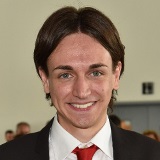 Mattia Sponchioni, PhD, Assistant Professor, Department of Chemistry, Materials and Chemical Engineering, Politecnico di Milano
Mattia Sponchioni, PhD, Assistant Professor, Department of Chemistry, Materials and Chemical Engineering, Politecnico di Milano
A model-based strategy is presented for the optimisation of yield and productivity, at a fixed purity specification, in the reversed-phase chromatographic purification of an oligonucleotide. Through this approach, the roles of collection window, column loading, and gradient slope on process performance were elucidated. In addition, it allowed the rapid design of an efficient MCSGP, which, when coupled to a dynamic process controller based on UV signal, ensured a robust operation.
 Amsphere A+: the new Protein-A affinity resin with high DBC and outstanding 1M NaOH stability
Amsphere A+: the new Protein-A affinity resin with high DBC and outstanding 1M NaOH stability
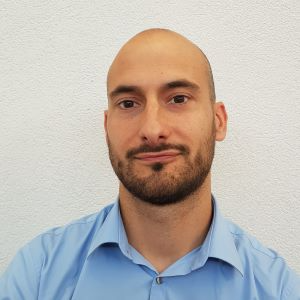 Gerald Platteau, Senior Application Manager, Application Team, JSR Life Sciences
Gerald Platteau, Senior Application Manager, Application Team, JSR Life Sciences
Protein A chromatography is the most common form of affinity chromatography used in the biomanufacturing of monoclonal antibodies and there are many commercially available PrA resins on the market. In 2016, JSR launched Amsphere A3, which gained tremendous momentum in being implemented in >150 clinical and commercial purification processes. The new Amsphere A+ further leverages the great science behind JSR’s PrA-resins and provides even better DBC, caustic stability and pressure-flow performance compared to A3. In this presentation, we will shed some light on the development journey of and the science behind Amsphere A+ and compare the characteristics and performance of it with other established PrA resins.
10:15Sponsored Presentation (Opportunity Available)
10:30Coffee Break in the Exhibit Hall with Poster Viewing

DOWNSTREAM PROCESSING FOR VIRAL VECTORS, PLASMIDS, VLPs, AND EVs
ウイルスベクター、プラスミド、VLP、EV向けダウンストリームプロセシング
Lord of the Rings: Optimisation of a Plasmid Purification Process Combining HTS and Mechanistic Modelling
 Sabrina Simpson-Koch, PhD, Scientist, Gene Therapy Technical Development, Roche Diagnostics GmbH
Sabrina Simpson-Koch, PhD, Scientist, Gene Therapy Technical Development, Roche Diagnostics GmbH
Plasmids are the key starting material for viral vector manufacturing. Due to the rapid growth of the CGT field and increased demand for high-quality pDNA, plasmid supply became a significant bottleneck. Here we present process optimisation using a combination of HTS and mechanistic modelling. The suggested process marks one of the key elements for Roche’s fast growing gene therapy activities, while facilitating the cost decrease of gene therapy products.
What about Chromatin? The Importance of Selecting the Right Endonuclease in Bionanoparticle Purification
 Patricia P. Aguilar, PhD, Research Group Leader, ACIB GmbH
Patricia P. Aguilar, PhD, Research Group Leader, ACIB GmbH
Separating bionanoparticles (BNP) from chromatin is particularly challenging due to the wide range of chromatin fragment sizes and charges. While endonuclease treatment reduces host cell DNA, tightly packed DNA within chromatin is resistant to conventional enzymes. Salt-active nucleases effectively remove DNA in chromatin form. This presentation will highlight their use in downstream processing of enveloped bionanoparticles such as HIV-1 gag VLPs and the measles virus.
12:10Sponsored Presentation (Opportunity Available)
12:40Networking Lunch in the Exhibit Hall with Poster Viewing

Dual-Stage Cross-Flow Filtration-Integrating VLP Recovery, Isolation, and Concentration Following Selective VLP Precipitation
 Annabelle Dietrich, PhD Student, Biomolecular Separation Engineering, Karlsruhe Institute of Technology
Annabelle Dietrich, PhD Student, Biomolecular Separation Engineering, Karlsruhe Institute of Technology
Toward standardised platform processing-an innovative dual-stage cross-flow filtration setup is introduced for integrated VLP capture and purification. Selective VLP precipitation and washing of the precipitate in the first membrane stage are combined with simultaneous recovery, isolation, and concentration of the re-dissolved VLPs in the second membrane stage. This study spotlights the potential to broaden the setup's applicability to diverse (viral) vectors, distinct process conditions, and continuous processing.
Phase-Separated Zwitterionic Polymeric Coacervates for the Isolation of Extracellular Vesicles
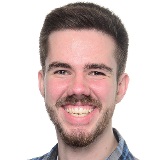 Jonathan Garlipp, PhD, Student, ETH Zurich
Jonathan Garlipp, PhD, Student, ETH Zurich
Despite growing interest in extracellular vesicles (EVs), their manufacturing is still limited by low yields and scalability issues. Current separation methods are challenged by co-isolation of impurities, scale-up, and potential changes in physicochemical properties of EVs. Here, we show an isolation strategy for EVs based on zwitterionic polymeric coacervates, exhibiting stimulus-responsiveness, anti-fouling, and liquid-like properties. We demonstrate how this method leads to a versatile, gentle, and scalable purification strategy.
Nanofiber-Based Adsorbent to Address Extracellular Vesicle Subpopulation Isolation
 Emma Burman, EngD Student, Department of Biochemical Engineering, UCL
Emma Burman, EngD Student, Department of Biochemical Engineering, UCL
Extracellular vesicles (EVs) facilitate intercellular communication by transporting bioactive molecular cargo and can be exploited as therapeutic agents. However, their purification from physiochemically similar impurities poses a manufacturing challenge. We evaluated the effectiveness of bind-elute ion exchange chromatography (IEX) with a nanofiber-based adsorbent for EV purification. IEX preserved EV bioactivity, and achieved high purity and recovery comparable to widely adopted size-based methods, with the advantage of separating distinct EV subpopulations.
15:00Close of Summit
* 不測の事態により、事前の予告なしにプログラムが変更される場合があります。
アジェンダ・講演者・スポンサー更新
